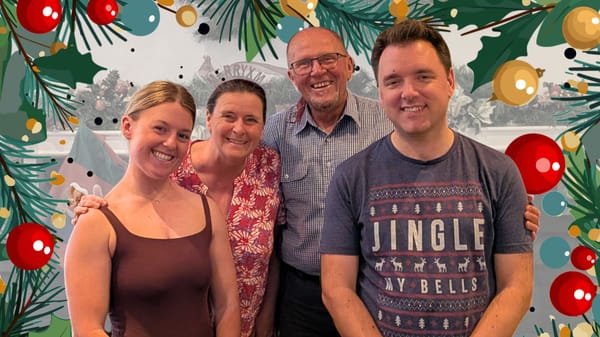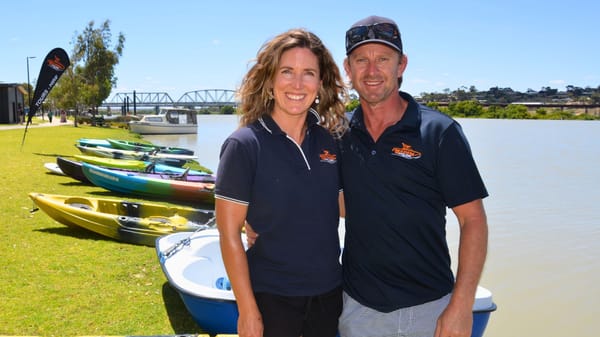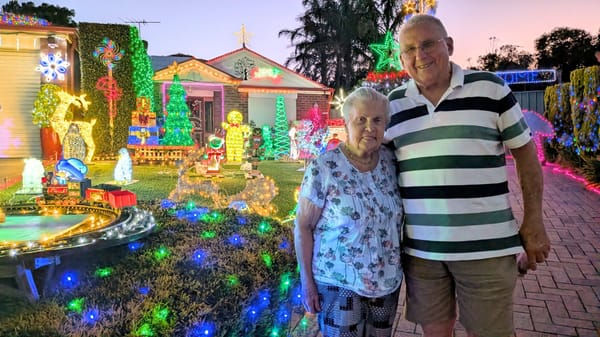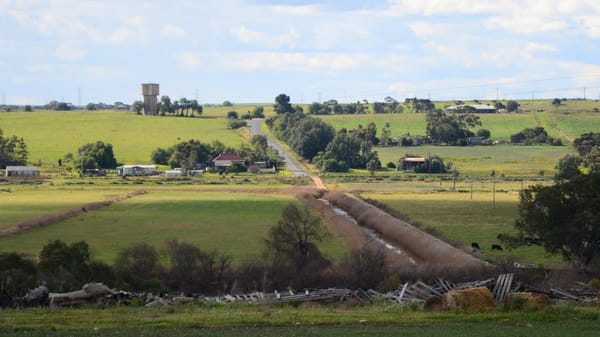After 89 years, Ida Warner returns to her childhood schoolhouse
Volunteers from Murray Bridge and around the Mallee have restored the historic Hundred of Roby School, near Coomandook.
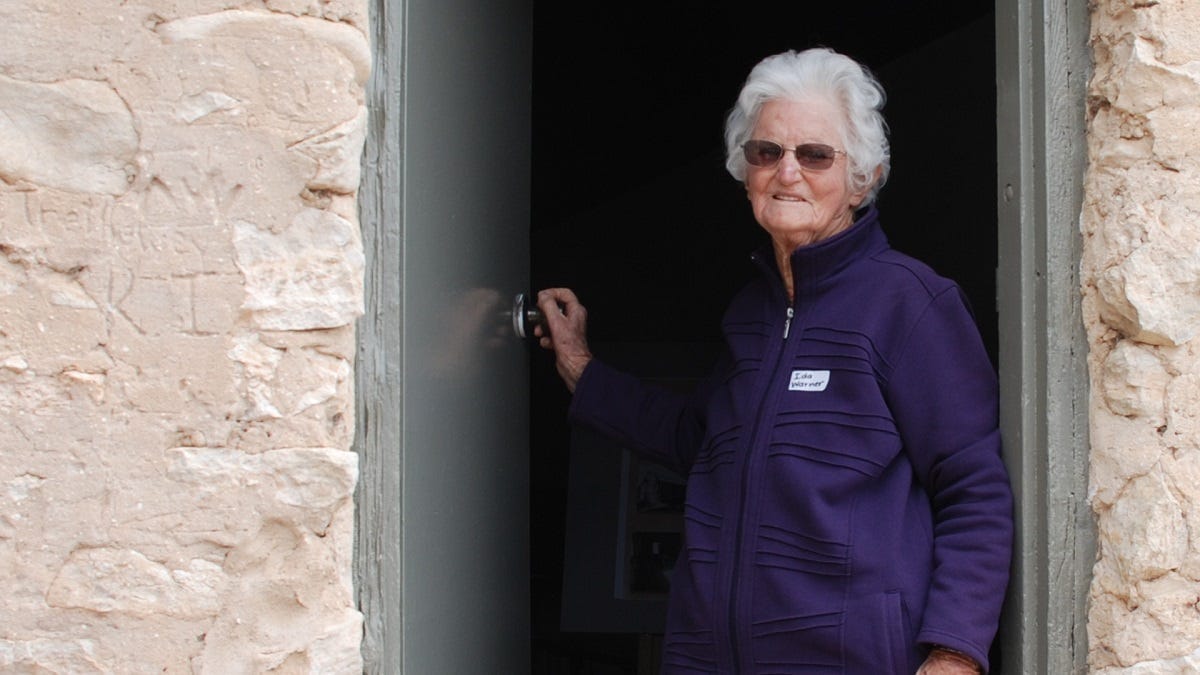
This post was contributed by Clem Tynan.

April 11, 2021 will be remembered as a special time in the Wilkin family’s 117-year history in the southern mallee.
Visitors gathered at the old schoolhouse on the family's property near Coomandook to celebrate the fact that – after a century of dust, vermin, rain and heat – it had been revitalised.
Ninety-four-year-old Ida Warner, nee Wilkin, was able to open the door of the old school and see it as it was in 1932 when she started her education.
She is believed to be the last surviving student who attended the Hundred of Roby School.
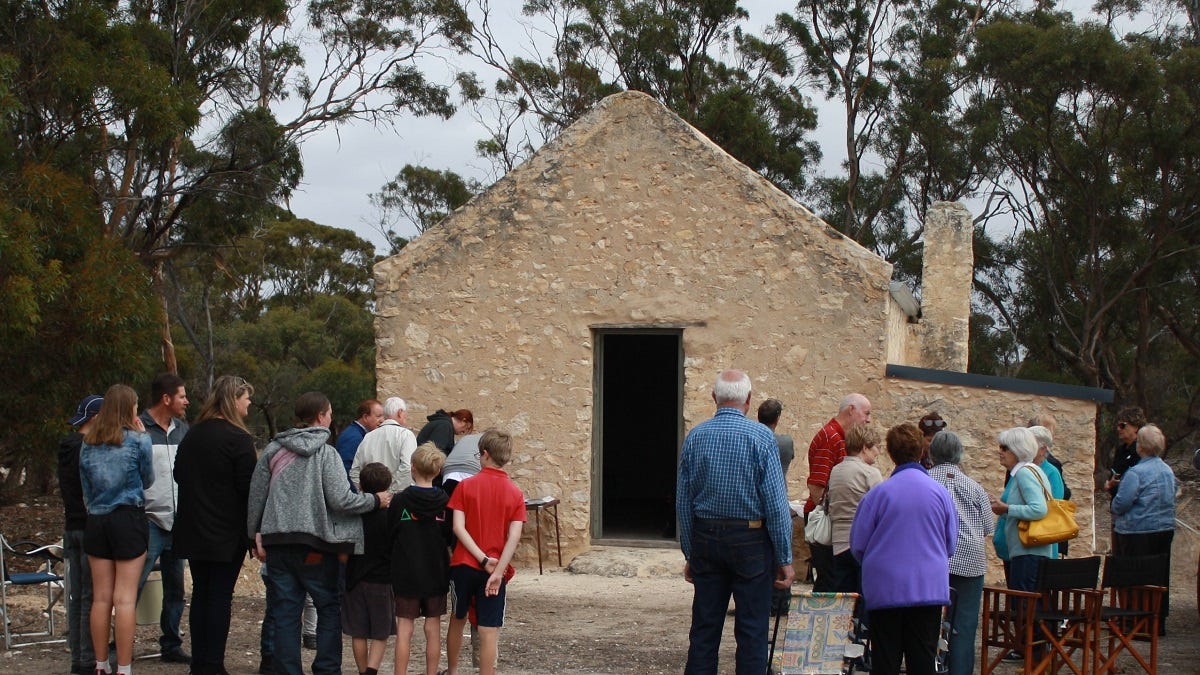
Between 1919 and 1937, children from the Brittain, Cordes, Coats, Davis, Hillman, Lymn, Lubcke, Mulkhilda, Sunquist and Wilkin families attended the school.
It was built by Clem Wilkin and Fred Cordes in 1919-20, on the Wilkin property, for the benefit and education of the 10 families on surrounding properties.
The sturdy little building was also used as a social meeting venue for about 25 years, then as a barn for a further 50.
Family members recalled encounters with rats, mice and bees over the years.
White ants had also enjoyed their time in residence, working hard at anything that was not jarrah or limestone; it is a pity that a cupboard containing all of the school records became their playground.
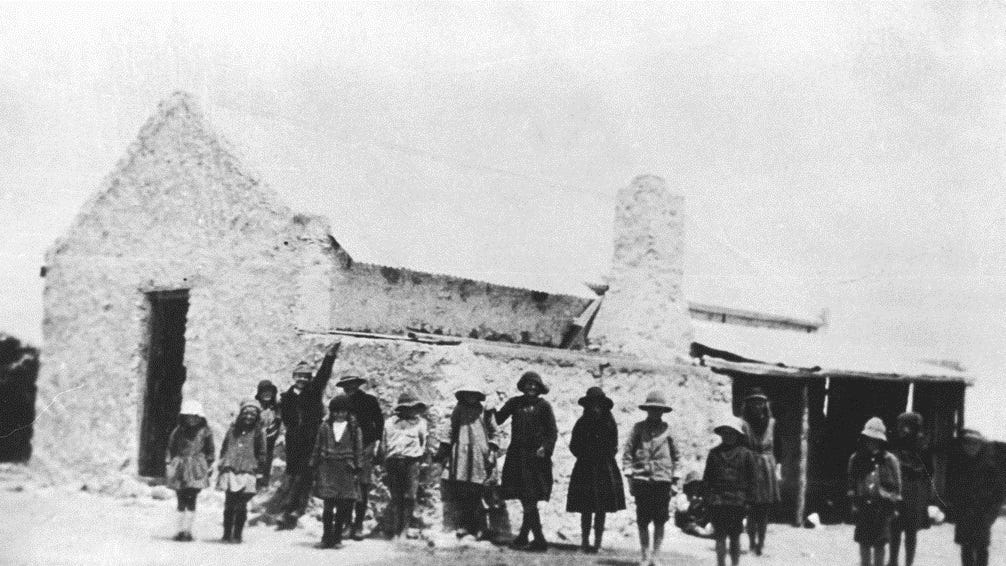
Wilkin family history in the area stretches back 117 years
Two of Clem Wilkin's brothers were among the first to farm at Coomandook, commencing in 1904.
Clem moved from Wonna, near Terowie, after riding his push bike to Coomandook to inspect properties in the hundred of Roby during 1908.
He married Emma Jones of Carrington in 1913 and the first of their family arrived in 1914.
The Cordes family lived on a neighbouring property and, along with other neighbours, required their children to be educated.
Neighbours happily collected and delivered dray loads of limestone to assist with the construction of the school building, which was made ready for students at the start of the 1920 school year.
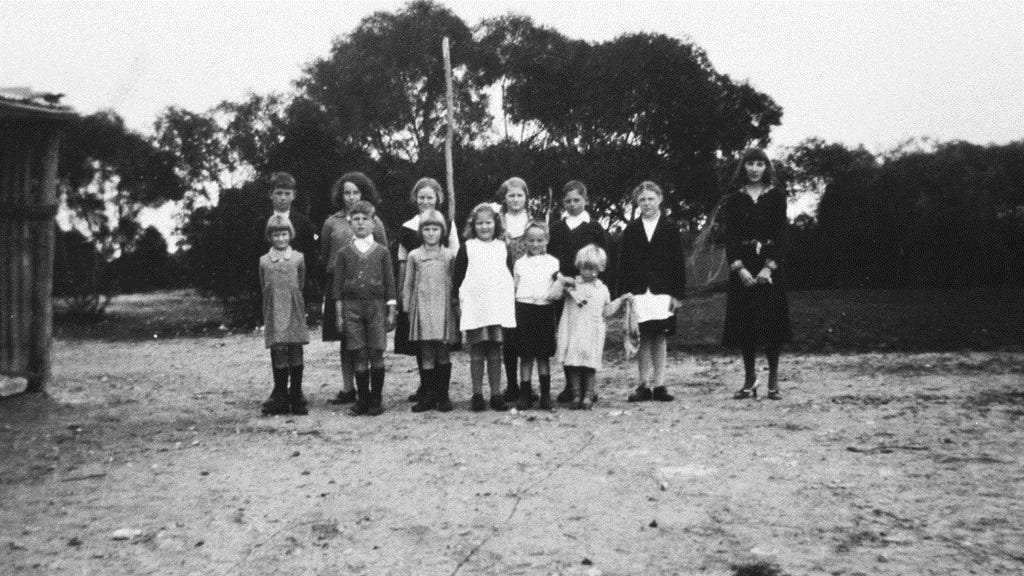
The first teacher, Miss Fisher, at her first posting, boarded three miles away at the Cordeses’, and there were no cars or roads in those days.
It was a real wonder that she stayed on.
After travelling to Coomandook by train, she was advised to continue to Yumali as the Cordeses never came to Coomandook.
On this advice to continued to Yumali, which at that time was nothing more than a small tin shed in the mallee scrub.
She waited many hours until a small girl appeared on a horse to pick up a parcel; she said to stay there, that she would arrange something.
Some time later there appeared a horse and cart, driven by a wild-looking, bearded man: Max Wilkin, Clem's brother.
Miss Fisher hoped the situation was sorted, as by this time it was nearly dark.
After several hours of travel though the bush they finally arrived at the Cordeses’ and met a rather distraught Mrs Cordes, who had been to Coomandook and back.
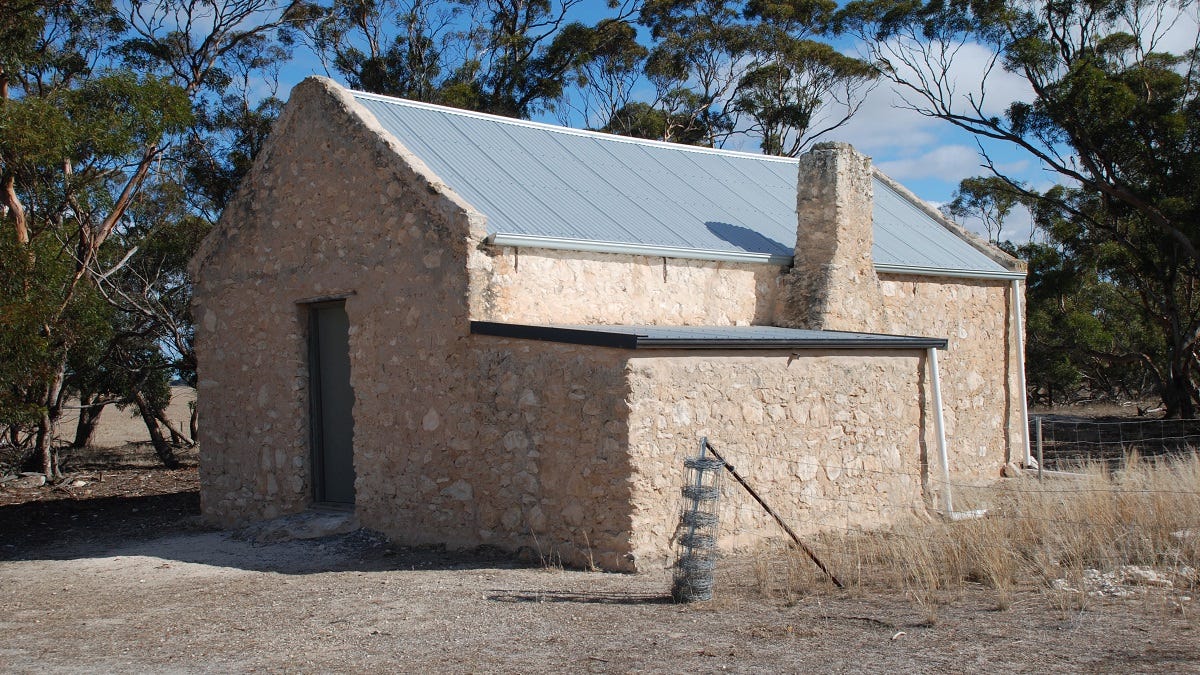
Early settlers’ descendents made restoration their mission
In the late 1990s the Wilkin Family Club recognised the significance of the building – on private property, two kilometres from the closest road – to the family and the community.
Several years later, negotiations with the current land owners resulted in a plaque being mounted on a large limestone, happily provided and placed in position by them.
The unveiling of this plaque attracted 150 people, a result that startled the committee and sparked interest in preserving this little piece of local history.
After further negotiations with the owners of the land and discussions with Wilkin family members, it was decided in 2018 to replace the roof using new corrugated iron.
Three of Clem and Emma’s grandchildren completed this job, along with some small repairs to the stone work – the first small step in the preservation of the almost 100-year-old building.
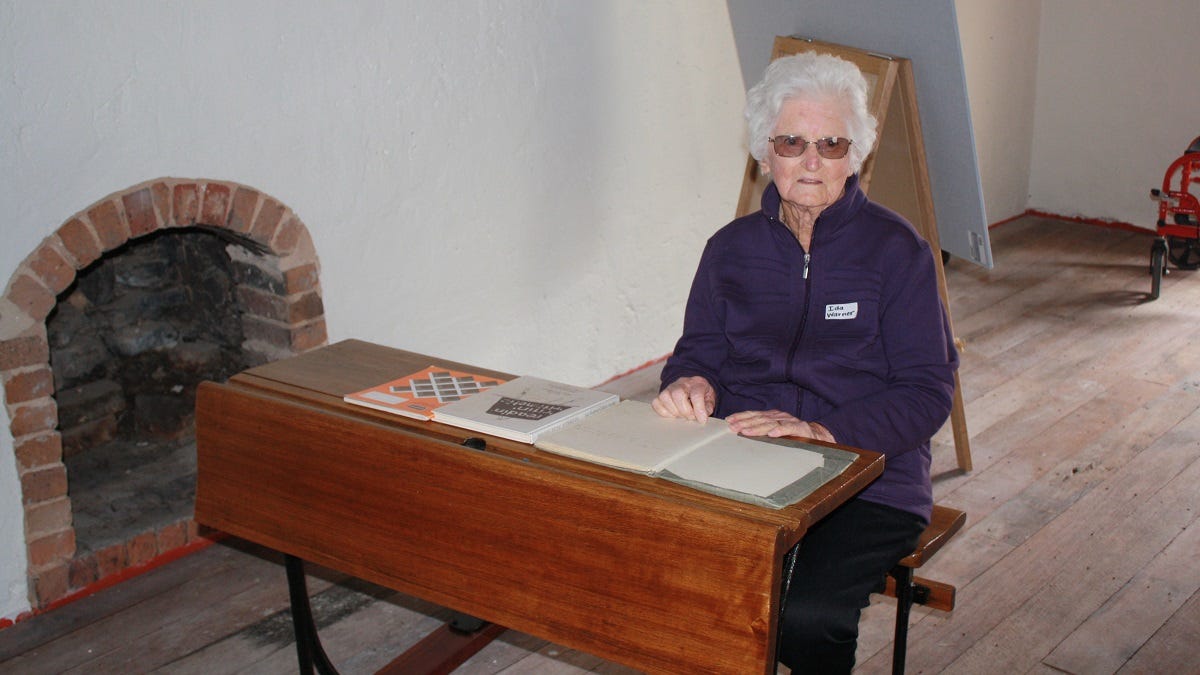
In early 2020 Clem and Emma’s daughter, Ms Warner, offered to help if the family wished to replace the floor.
There were some stipulations, however: the floor was jarrah, of a rare size, and the requirement was to restore it to its former glory.
Late in 2020 work began on the removal of the old floor, revealing that about 60 to 70 per cent of the material would be able to be re-used.
This was quite incredible considering it had been simply laid on top of rock and sand, left over from the building of the walls.
In early 2021, work by several grandchildren of Clem and Emma removed many tons of material and prepared the room for the new floor.
The leader in this project, Max Wilkin, went to great lengths to locate matching flooring to finish the project.
The great contributions and support by family and others made it a very worthwhile project.
You can help keep local stories like this one free for everyone to read. Subscribe to Murray Bridge News today and support your locally owned news outlet, plus get access to exclusive stories you won’t find anywhere else, for just $5.50 a month.

